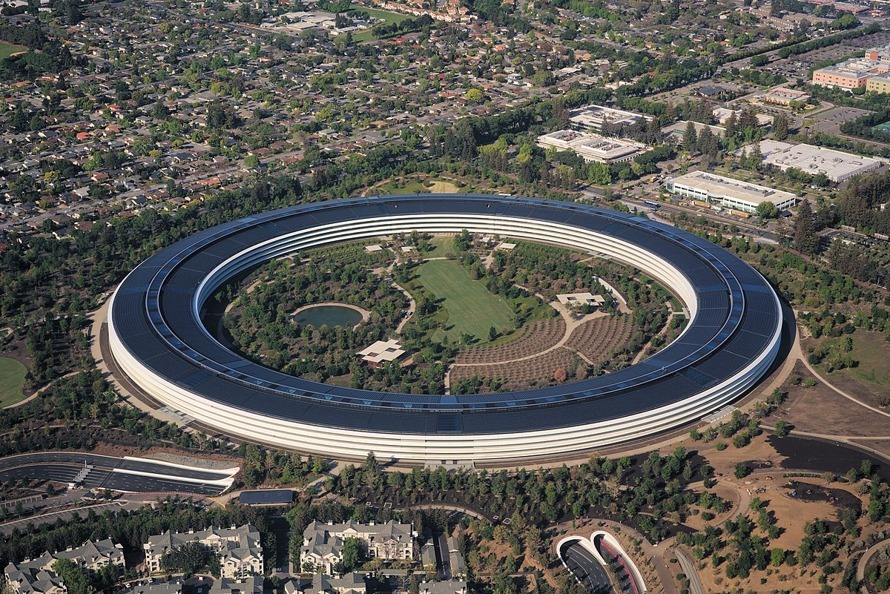Apple University Vice President and Dean Joel Podolny has penned an article that takes a deep dive into how Apple is structured and how it's unique among large businesses.
The in-depth review of Apple's structure, published Thursday in Harvard Business Review, was co-written by Apple University faculty member Morten Hansen. And it offers an interesting look at how the Cupertino tech giant is "organized for innovation."
Podolny opens by noting how much Apple has grown. In 1997, when Steve Jobs returned to the company, Apple had 8,000 employees and about $7 billion in annual revenue. Fast forward to 2019, and the company has 137,000 staffers and brings in about $260 billion in revenue.
But amid all of that growth, Apple has largely kept the same centralized organizational structure that Jobs implemented in 1997.
"Believing that conventional management had stifled innovation, Jobs, in his first year returning as CEO, laid off the general managers of all the business units (in a single day), put the entire company under one P&L, and combined the disparate functional departments of the business units into one functional organization," Podolny wrote.
The Apple University VP notes that most large companies have decentralized or multi-division organizational structures. Apple, then, is proof that a centralized system can be functional for a business this size, they added.
Of course, the two writers note that a lot has still changed in the more than two decades between 1997 and 2019. "Apple relies on a structure that centers on functional expertise. Its fundamental belief is that those with the most expertise and experience in a domain should have decision rights for that domain," the piece continues.
"This is based on two views: First, Apple competes in markets where the rates of technological change and disruption are high, so it must rely on the judgment and intuition of people with deep knowledge of the technologies responsible for disruption. Long before it can get market feedback and solid market forecasts, the company must make bets about which technologies and designs are likely to succeed in smartphones, computers, and so on. Relying on technical experts rather than general managers increases the odds that those bets will pay off."
The piece also details three leadership qualities that Apple looks for in a candidate, which has been applied for Apple managers at every level since Jobs first adopted the organization.
They include: "deep expertise that allows them to meaningfully engage in all the work being done within their individual functions; immersion in the details of those functions; and a willingness to collaboratively debate other functions during collective decision-making. When managers have these attributes, decisions are made in a coordinated fashion by the people most qualified to make them."
Podolny and Hansen write that Apple's business structure is uncommon. And although it includes some risks not seen with decentralized models, it can offer "extraordinary results" for companies that adopt it.
"[Apple's organization] flies in the face of prevailing management theory that companies should be reorganized into divisions and business units as they become large. But something vital gets lost in a shift to business units: the alignment of decision rights with expertise," the piece reads.
Despite some of the hurdles that companies may see when attempting to adopt a model similar to Apple's, Podolny notes that the shift could be done in intermediate steps — and, after it's complete, may be well worth the effort. "Apple's track record proves that the rewards may justify the risks. Its approach can produce extraordinary results," Podolny concludes.
The full piece goes into further depth and offers more detailed examples of Apple's organizational structure, and is well worth a read.
 Mike Peterson
Mike Peterson







-m.jpg)






 Christine McKee
Christine McKee
 Malcolm Owen
Malcolm Owen
 Marko Zivkovic
Marko Zivkovic

 Andrew Orr
Andrew Orr
 Andrew O'Hara
Andrew O'Hara
 William Gallagher
William Gallagher





-m.jpg)



5 Comments
I must say... It is a beautiful building! Kind of reminds my of an above ground ring particle accelerator... or a ring frisbee. :-0
Whatever management style Steve Jobs instituted within Apple after his returned to Apple is remarkable and still works with the size and complexity of today's Apple.
Podolny’s article is a writing masterclass. It explains EVERYTHING. And I see why Forstall and Browett didn’t fit the structure.